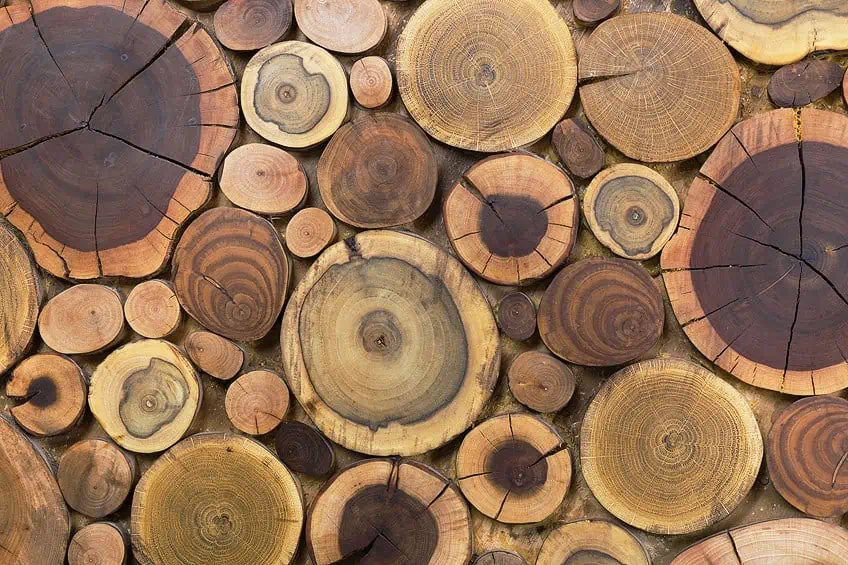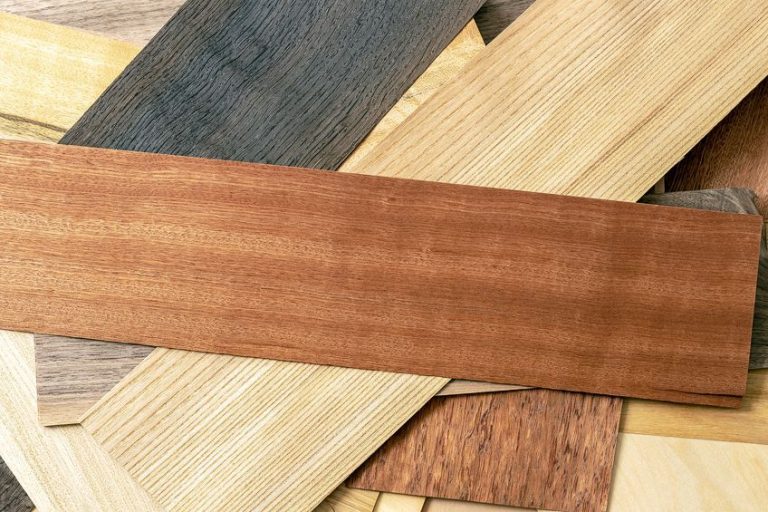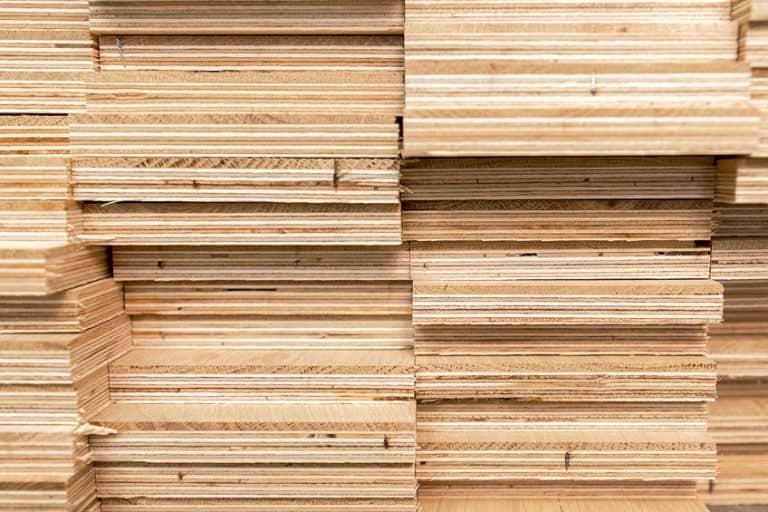Where to Buy Wood – Best Places to Buy Wood
Wood has been a staple resource in the development of modern society, and even though we understand growth patterns and harvest wood more sustainably, it can still be difficult to track down good quality wood, no matter what state you live in. That’s why we’ve prepared a short list of where to buy wood based on what is most convenient for you, and what different retailers and wholesalers have to offer when it comes to wood for crafting.
What Types of Wood Are Available for Purchase?
When it comes to wood crafting, thinking about where to buy wood that is of good quality and that is decently priced can be a challenge. The two wood types that are used most often in wood crafting are solid wood and engineered wood, so let’s have a look at these two different types of crafting materials, what they are used for, and their inherent characteristics.
Solid Wood
When most of us refer to wood, this is what we are talking about. Hardwood is any wood board that has been cut and shaped directly from a tree. Hardwood is known as the solid wood board, as when the trunk of the tree has been felled, the wood is simply cut from the felled trunk and shaped into various sizes and shapes. Solid wood boards have been used to build the majority of homes in the United States. This is because solid wood board tends to be very durable, dense, easy to work with, and most importantly readily available.
Solid wood is usually split into two types, namely softwood, and hardwood, with the latter being far denser and coming from trees that are at the whims of the seasons.
When it comes to crafting, furniture making, cabinetry, and even construction, solid wood is one of the best materials to use. Solid wood is also highly customizable as you can use things like tung oil, linseed oil, varnish, paint, epoxy, and even wood stain to change the color and texture of your wood. Pretty cool right?
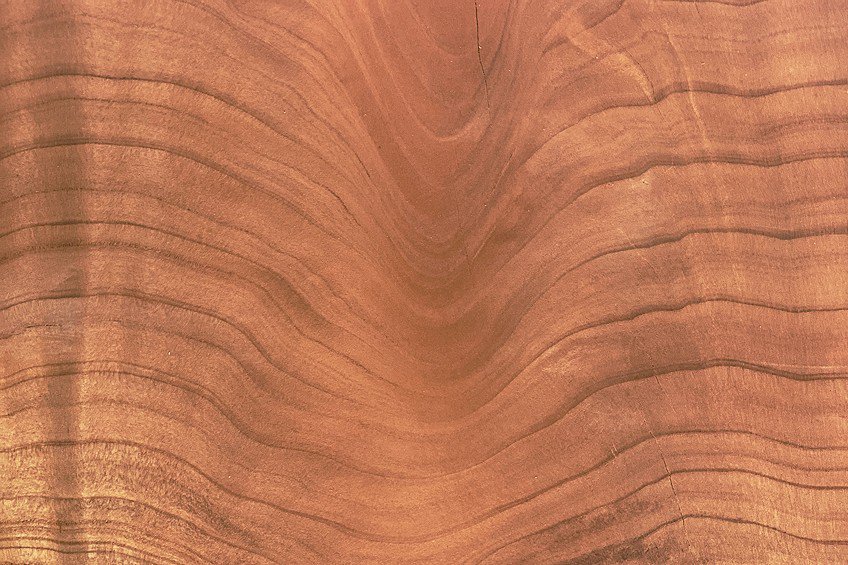
Solid wood can also be cut, planed, shaped, bent, joined, pressed, and even twisted. Its malleability means that there are hundreds of uses for solid wood. In fact, it is widely used in a number of industries all over the world.
Each wood species has unique characteristics, so you can find solid wood being used to make an impressive number of products, or as part of the products themselves.
What Can Be Made With Solid Wood?
Solid wood has been used to create a number of incredible things ever since we discovered how strong and versatile it is. Solid wood can be cut, dried, treated, planed, tapped, painted, stained, epoxy coated, hollowed out, and even rolled and bent! What you’re able to make using wood is only limited by your imagination, the type of wood you have, your skill level, and how much time you have.
Here are a few everyday items that are made of solid wood.
Cabinets
Cabinetry has been around for hundreds of years, and while it previously would have been reserved for those who could afford it, pretty much everyone these days has them, and some of the highest quality and longest-lasting cabinets are made out of solid wood board. Wood species used to create cabinetry include hickory, pine, cherry, and maple wood.
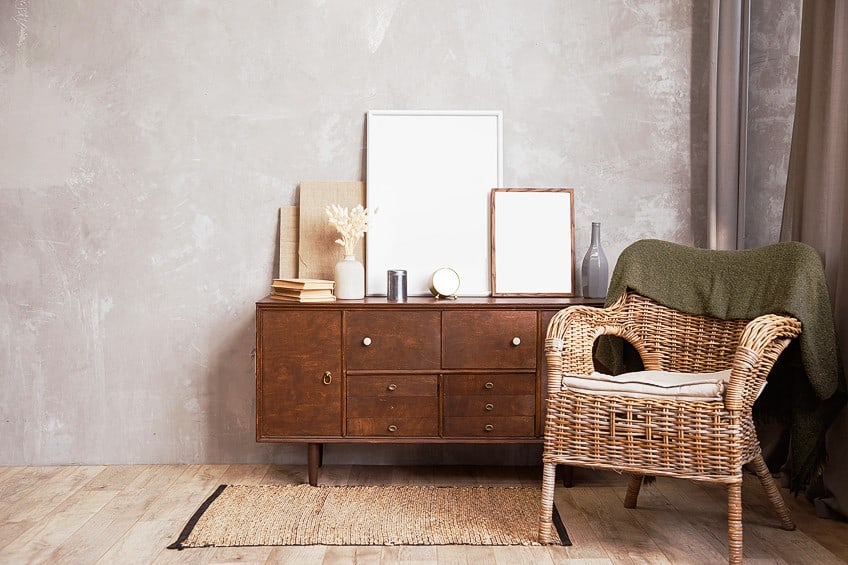
Window Frames
Cabinetry has been around for hundreds of years, and while it previously would have been reserved for those who could afford it, pretty much everyone these days has them, and some of the highest quality and longest-lasting cabinets are made out of solid wood board.
Wood species used to create cabinetry include hickory, pine, cherry, and maple wood.
Furniture
Even before chairs and tables were mass-produced, we have been using wood to make them. Furnishings including dining room tables, recliners, sofas, kitchen countertops, bedside tables, best wood species for furniture are oak, maple, pine, teak, and walnut (the latter for higher-end furnishings.
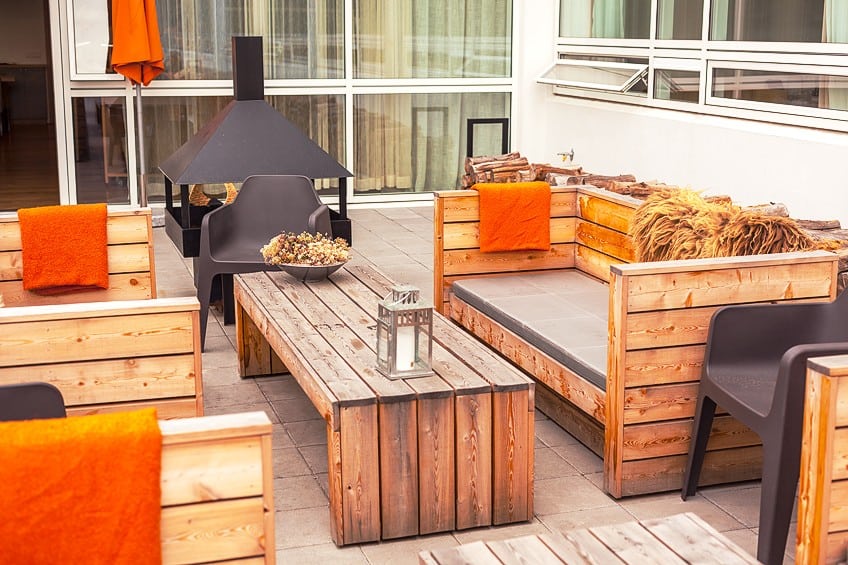
Crafting
Crafting, whether you’re a professional or a DIY weekend warrior, can be tons of fun. Wood crafting consists of many different disciplines, including furniture making, cabinetry, pyrography, installation art, wood carving, whittling, and even model making. Wood crafting often intersects with another discipline such as epoxy resin molding and even metallurgy!
Pretty much any wood species can be used for crafting, depending on what you would like to make and what it will be used for.
Construction
Whether you are using wood to create your attic or the structural frame for your home, pretty much every free-standing home in the United States would be nothing without some good old-fashioned lumber. Lumber is often used to make load-bearing beams, trusses, struts, cross-members, flooring frames, and even archways inside the home!
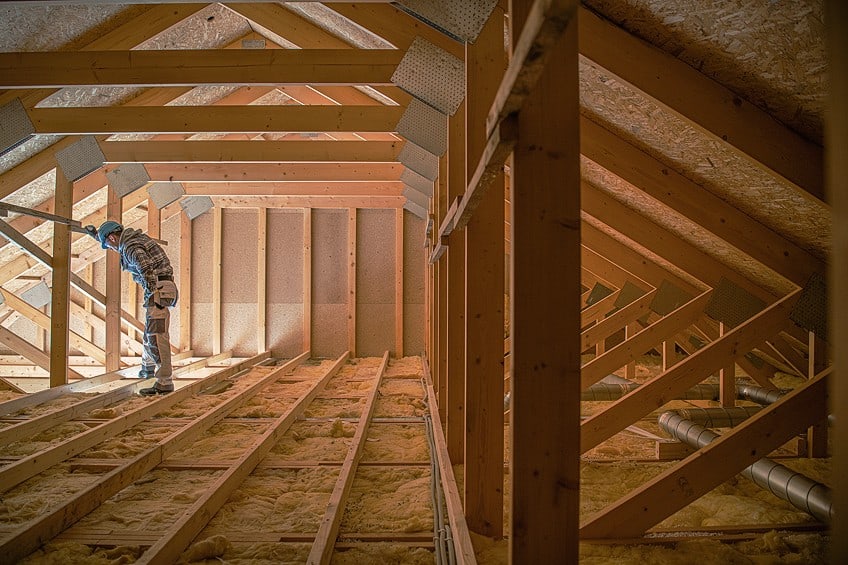
Engineered Wood
Before we show you where to buy wood we thought we’d show you some options aside from solid wood board. Engineered wood board tends to be just as (if not more) popular than the solid wood board these days. If you don’t know what an engineered wood board is, it is essentially a board made from wood particles and other composite materials. How is this possible? Engineered wood is made by taking small wood pieces, mixing them with some resin, squishing them into the shape of a board, and then applying a vast amount of heat to the mold until the mixture retains its shape.
Pretty cool right? Engineered wood boards can be made of pretty much anything, whether it be sawdust or splinters pulled out of a woodchipper. The cool thing about engineered wood is that it can be made with pretty much any characteristic you’d like.
Unlike solid wood where you have to select a specific wood species in order for your wood to possess certain characteristics, engineered wood board’s characteristics can be customized simply by adding or removing materials in the production process. Engineered wood comes in many varieties, including plywood, medium-density fibreboard, particle board, laminated board, and even veneer board. These all have their advantages and disadvantages depending on their application, but generally speaking, they make for excellent alternatives to solid wood boards, and can even be used in conjunction with solid wood boards.
What Is Engineered Wood Used For?
Engineered wood can be used for a number of things thanks to its inherent versatility. Since engineered wood boards can be created to have different attributes depending on the materials it is composed of.
That being said, let’s have a look at some of the things that can be made out of engineered wood and why it makes for the perfect fit in some applications.
Kitchen Cupboards
Like solid wood boards, engineered wood can be used to create kitchen cupboard doors too. MDF with a nice veneer is a popular choice when creating cupboard doors out of engineered wood as they tend to look good, require very little maintenance, and they’re far less expensive compared to the solid wood alternative.

Small Tabletops
While not impossible, it’s pretty rare to find large tabletops made of engineered wood. However, smaller round bedside tables or decorative corner tables are commonly made of various types of engineered wood as the materials tend to be easy to work with, readily available, and durable for the purposes of the application.
Wood Crafting Projects
While some types of engineered wood may not be the best choice for most wood-crafting projects, most of them make for an excellent backing material for crafts and installation art. Most types of engineered wood are pretty sturdy and have the ability to be both tapped and nailed with ease. In some instances, engineered wood can be waterproofed for exterior use too.

Flooring
While solid wood flooring is seen as the high-end option when it comes to flooring, it can be very difficult to tell the difference between solid wood flooring and engineered wood flooring with a high-quality veneer. Engineered wood flooring can last just as long as solid wood flooring, and often requires far less maintenance.
However, this does depend on what it’s made of and the finish it’s fitted with.
Furniture Backing
Engineered wood is a really common component when in the furniture production and upholstery industry. Engineered wood is used as the backing and baseboards for couches and armchairs, as it has the perfect rigidity-to-flexibility ratio to support the weight of a few people. Engineered wood is used because it is far cheaper than other alternatives.
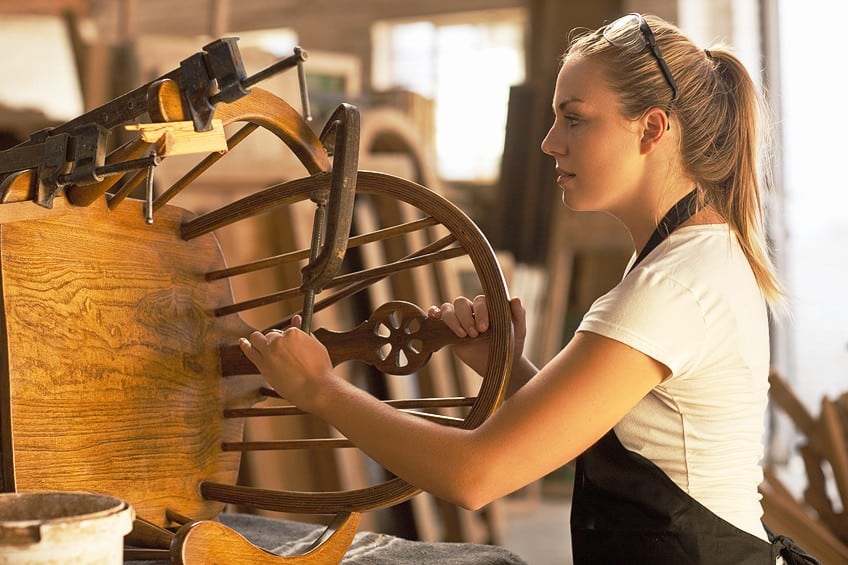
Where to Buy Wood
Now that you know what types of wood are available for purchase, we thought that we would show you where to buy wood depending on where you live and what resources you have available to you. Without further ado here is where to buy wood for woodworking and pretty much anything else you’d need wood for.
Buying Wood Online
When searching for where to buy wood for woodworking, you’ll likely come across a number of online resources. Buying wood online is a relatively new service, but it has all the hallmarks of buying pretty much anything else online. As you probably know, there are a few unspoken rules when buying things online that you should follow to avoid disappointment. Due to a global lumber shortage buying wood online has become increasingly popular, with retailers like Amazon and Home Depot seeing a huge uptick in online sales over recent years.

These retailers have the buying power to keep their stock at the ideal levels while allowing customers unfettered access to lumber from all over the country. Buying wood online is certainly convenient when compared to lugging yourself down to a physical store, having to look through lumber shelf by shelf, and then courier that lumber home by yourself. This is why the answer to the question “where to buy wood for woodworking” has gradually become “online” as opposed to your local lumber yard.
Advantages and Disadvantages to Buying Wood Online
One of the advantages of buying wood online is that prices tend to be competitive, which means you have the luxury of shopping around. Buying wood online is also far cheaper due to online sellers having fewer overheads to consider aside from storage and packaging for delivery. This means that the only costs that are passed on to you are storage, packaging, wood price, and delivery. Online retailers also do have to worry about things like shelf presentation, staffing, rental spaces, offering loading services, and other things associated with traditional retail outlets.
You also have the advantage of having a wider variety of wood to choose from since the seller doesn’t have to physically present the wood to you aside from when it is delivered.
This means that wood can simply be photographed and stored in a warehouse instead of you having to rummage through shelves of obscured wood board. There are some disadvantages to purchasing wood online too, all of which you should consider based on how soon you need the wood, the size of board you need, and how much you are willing to pay.
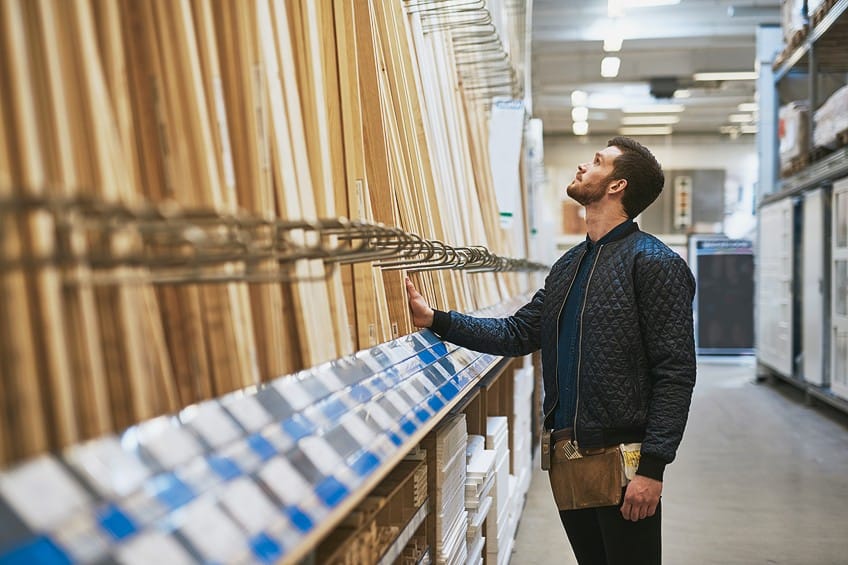
One thing you should consider is stock. Since a broader customer base has access to purchase wood, rare wood species generally tend to go out of stock pretty quickly. This means that it can be difficult to get the wood you want consistently. This also means that if you place an order and that retailer is out of stock, you will need to wait for the stock to arrive before your order can be fulfilled and shipped.
- Convenient
- Larger selection of wood to choose from
- Far less expensive
- You aren’t limited by where you live
- You have access to local and foreign wood species
- Delivery can take a long time
- Suppliers can have more demand than they have stock available
- Wood can differ considerably from images on websites
- Rare wood species generally cannot be purchased in bulk
Buying Wood from Retailers
One of the oldest trades on the face of the planet involves felling trees and selling wood. It’s been going on for far longer than the internet has been around, so you can rest assured that lumber retailers know what they are doing. While some retailers dabble in wood supplies, others specialize in lumber and fasters, and the service between them can vary considerably. Some of the best places to get wood in person are home improvement stores like Lowes and Home Depot, as they tend to stock wood species that have the most demand, not to mention fasteners and coatings to go with them.
Retailers tend to provide the best prices they can, and because people tend to frequent their locations daily, they’re virtually always up to scratch when it comes to stock.
The cool thing about purchasing wood from a retailer is that you can physically inspect the wood board before purchasing. You have many boards of the same species to choose from, so you can avoid small or knotty examples and get the best board possible for your project. Retailers also tend to offer services like transportation and resizing.
Advantages and Disadvantages of Buying Wood from Retailers
We’ve already mentioned some of the advantages of buying wood in-store. You get to inspect the wood in person, select the best wood board for your application, potentially have your wood resized and delivered, and you have access to surface coatings and fasteners. Are there any other advantages to buying wood in-store instead of online? Well, when buying wood online you might not receive the same level of customer service that you do in-store. After all, there are sales assistants and specialists available that should be able to help you find things and answer any questions you might have.
They might be able to make suggestions regarding what wood you should use or give you some tips regarding your project.
Not all home improvement stores are the same though, as even if they fall under the same brand the services they offer can vary depending on the size of the store and what type of lumber they have access to. It can also be difficult to determine what wood they have in stock without calling ahead, which may or may not work depending on how busy the store is.

Stores also have a limited amount of storage space, so while they might have commonly sought-after wood species, rare or more obscure lumber probably won’t be available as they won’t sell as easily. This means that the scope of wood species you have to choose from is limited compared to shopping online.
- You can physically inspect wood boards
- You potentially have access to wood-cutting and transportation services
- You have access to customer service and professional advice
- Fasteners, coatings, and wood treatment oils are all sold here as well
- You have to physically go to the store
- You might need to call ahead to ensure the store has a stock of your desired wood
- Products and services can vary considerably depending on store size and location
- Stores have limited space so they might not stock wood species that don’t sell well generally
- Buying wood in-store tends to be more expensive due to overhead costs, although this can vary from store to store
Alternative Places to Buy Wood
If buying wood online and in-store are not good options for you, there are alternatives to them. If your city or town does not have a major retailer and you cannot seem to get lumber delivered to you, you might still be able to get some wood at some of the following locations.
Be sure to ask around and check local advertisements if you ever find yourself in this position.
Salvaged Wood
Can’t find a new wood board for your next project? No problem. If there are old chairs, tables, or even old doors laying around, why not repurpose their wood in order to complete your project? Not only is using reclaimed wood really trendy at the moment, but it’s good for the environment too and you won’t have to spend much money to get your hands on some.
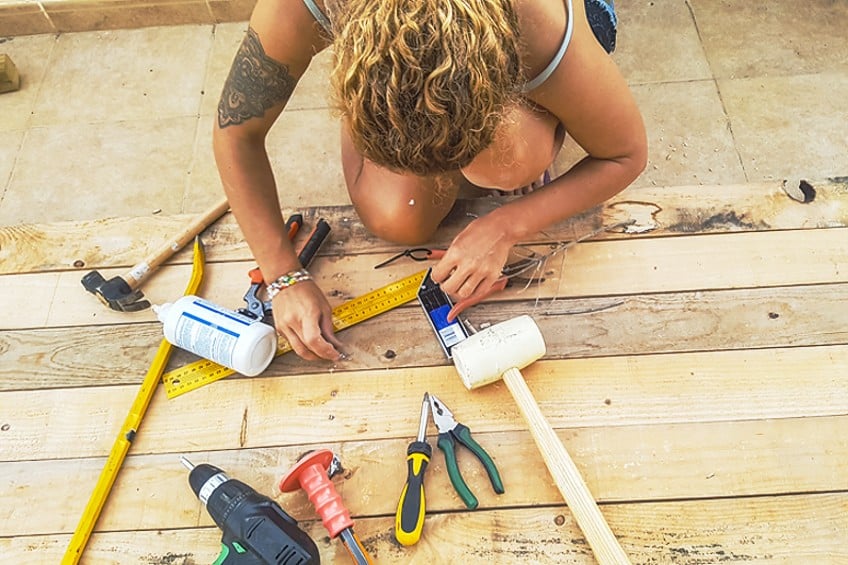
Reclaimed Wood
Reclaimed wood is just as good as salvaged wood. Instead of salvaging wood that others may have thrown away, you should consider repurposing older projects that you no longer have use for. If you’re friends with other wood crafters, why not ask them if they have any old materials that they don’t mind donating to your cause?
Wooden Pallets
Another great source of wood for a project is old wooden pallets. These are pretty easy to find whether it be in trash heaps or at the back of distribution centers. Broken pallets are pretty much useless for the purpose of transporting goods, so why not ask if you can take them off their owner’s hands to use for your next workpiece?

Now that you know what kinds of wood are available to you, the pros and cons of buying wood online vs. in-store, and what alternatives there are to both of these, why not go out there and see which source of wood works best for you? Remember to shop around to find the best possible deal for your next project!
Frequently Asked Questions
Where Can I Buy Hardwood?
Are you wondering where to buy hardwood? Hardwood can be purchased at home improvement stores, online, at lumber yards, at creator spaces, and at your local crafts store. If you’re still wondering where to buy hardwood because you have exhausted these options, try purchasing reclaimed wood.
What Is the Best Place to Buy Wood?
One of the most commonly asked questions in crafting revolves around the best place to buy wood. The best place to buy wood is arguably lumber yards, as you’ll have access to a larger selection of lumber and you’ll be able to have your wood cut to size.
How Do You Know Where to Buy Lumber?
Are you a bit confused as to where to buy lumber? Lumber can be purchased in-store or online, at lumber yards, at hobby stores, and even from scrap yards. The price of lumber can vary depending on where you choose to buy it from, so it’s always a good idea to shop around.
Is Buying Hardwoods Expensive?
Hardwood tends to last longer and be more treatable when compared to engineered wood. However, does this make buying hardwoods expensive? This depends on where you choose to purchase your wood, but if you shop around, you should be able to find the most commonly used hardwood species at reasonable prices.
What Is the Best Wood for Woodworking?
If you are looking for a good wood for woodworking, the best wood for woodworking depends on what you intend to do with your workpiece. Choose a wood that is as durable, versatile, and easy to work with the context of your intended application.

I have been into woodworking since 2005 and woodturning since 2011. Because of my love for wood and woodworking, I started woodhappen.com to teach other enthusiasts about how to finish and seal wood, the best woodworking tools, the different types of wood, and everything else related to woodworking! Read more about me here.

